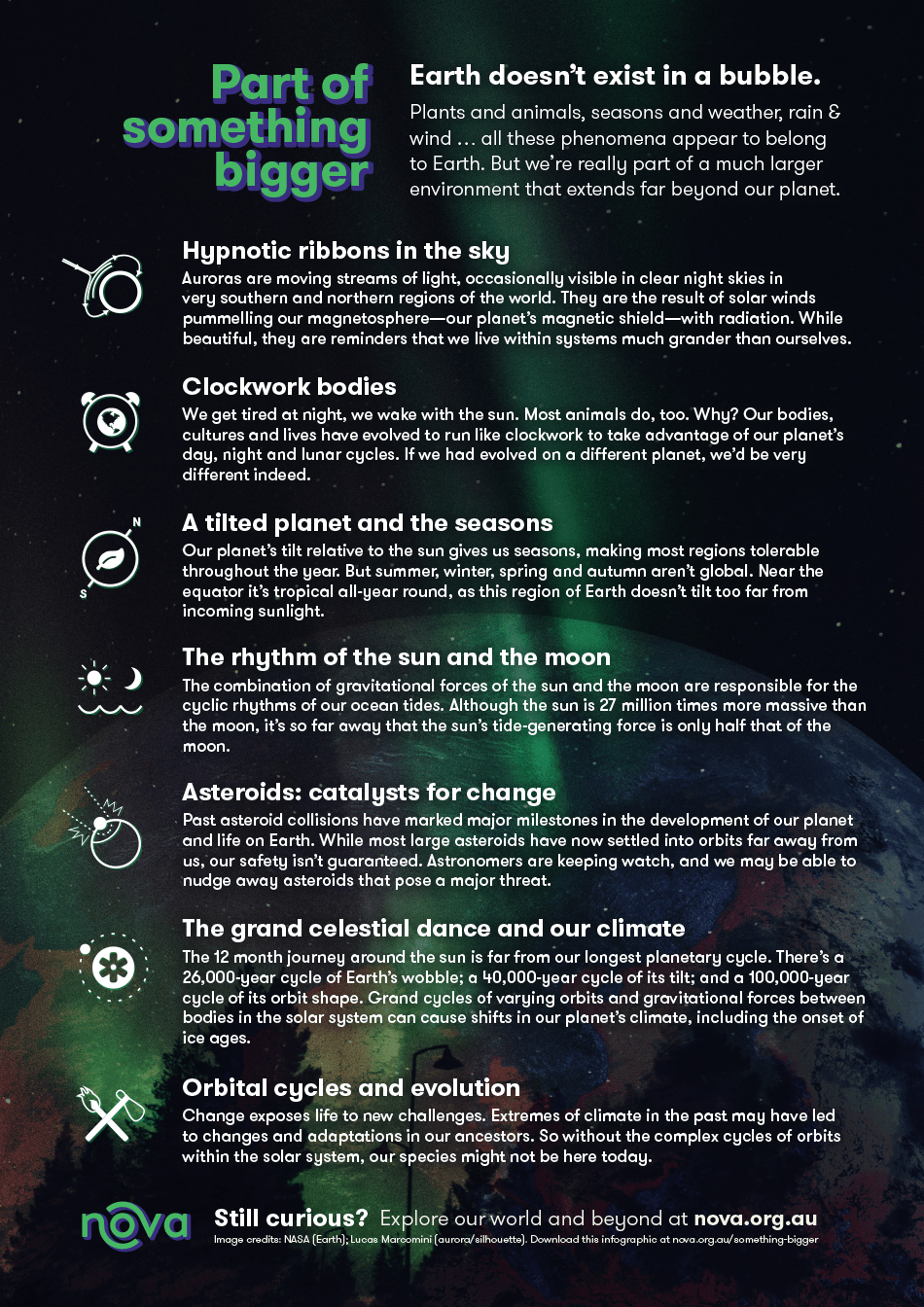- Home
- Infographics
- Part of something bigger
Part of something bigger
Plants and animals, seasons and weather, rain and wind … all these phenomena appear to belong to Earth. But we’re really part of a much larger environment that extends far beyond our planet.
Earth doesn’t exist in a bubble. Plants and animals, seasons and weather, rain & wind … all these phenomena appear to belong to Earth. But we’re really part of a much larger environment that extends far beyond our planet.
- Hypnotic ribbons in the sky
Auroras are moving streams of light, occasionally visible in clear night skies in very southern and northern regions of the world. They are the result of solar winds pummelling our magnetosphere—our planet’s magnetic shield—with radiation. While beautiful, they are reminders that we live within systems much grander than ourselves. - Clockwork bodies
We get tired at night, we wake with the sun. Most animals do, too. Why? Our bodies, cultures and lives have evolved to run like clockwork to take advantage of our planet’s day, night and lunar cycles. If we had evolved on a different planet, we’d be very different indeed. - A tilted planet and the seasons
Our planet’s tilt relative to the sun gives us seasons, making most regions tolerable throughout the year. But summer, winter, spring and autumn aren’t global. Near the equator it’s tropical all-year round, as this region of Earth doesn’t tilt too far from incoming sunlight. - The rhythm of the sun and the moon
The combination of gravitational forces of the sun and the moon are responsible for the cyclic rhythms of our ocean tides. Although the sun is 27 million times more massive than the moon, it’s so far away that the sun’s tide-generating force is only half that of the moon. - Asteroids: catalysts for change
Past asteroid collisions have marked major milestones in the development of our planet and life on Earth. While most large asteroids have now settled into orbits far away from us, our safety isn’t guaranteed. Astronomers are keeping watch, and we may be able to nudge away asteroids that pose a major threat. - The grand celestial dance and our climate
The 12 month journey around the sun is far from our longest planetary cycle. There’s a 26,000-year cycle of Earth’s wobble; a 40,000-year cycle of its tilt; and a 100,000-year cycle of its orbit shape. Grand cycles of varying orbits and gravitational forces between bodies in the solar system can cause shifts in our planet’s climate, including the onset of ice ages. - Orbital cycles and evolution
Change exposes life to new challenges. Extremes of climate in the past may have led to changes and adaptations in our ancestors. So without the complex cycles of orbits within the solar system, our species might not be here today.
Image credits: NASA (Earth); Lucas Marcomini (aurora/silhouette).






